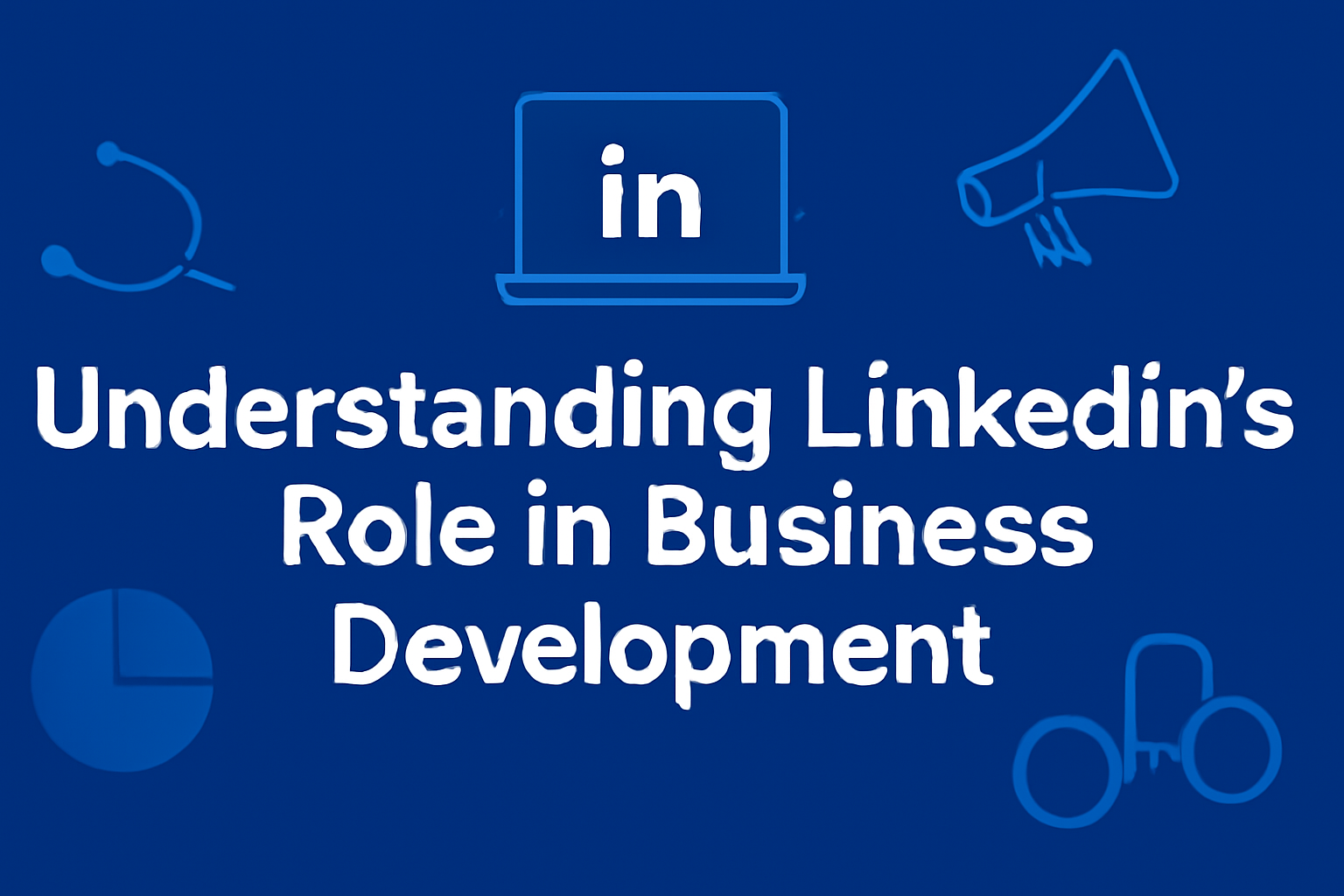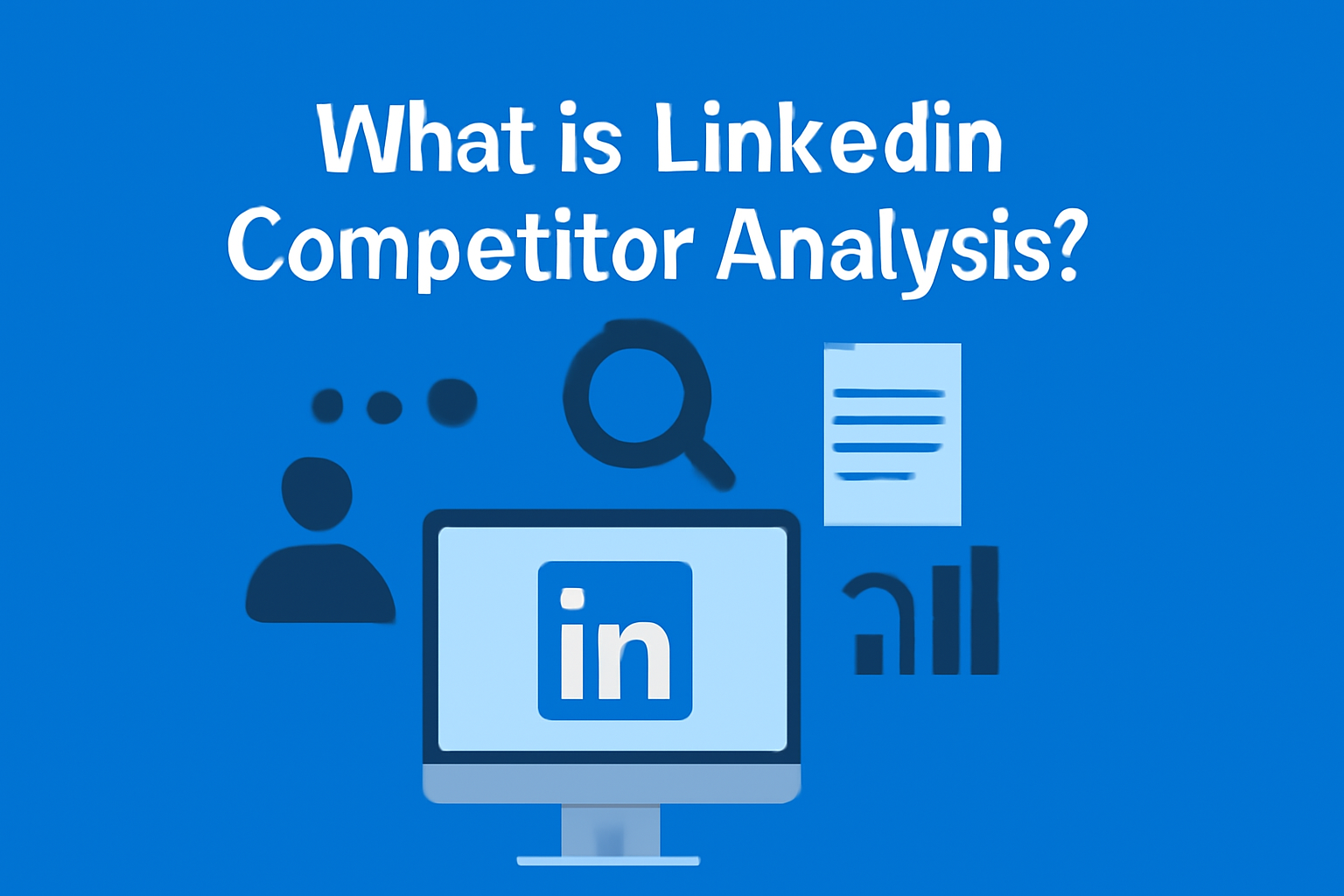In today’s fast-paced and competitive business world, agencies need to leverage every available tool to gain an edge. LinkedIn has emerged as a critical platform for business development. It has a vast professional network.
However, simply being on LinkedIn is not enough. Agencies must consistently monitor their competitors’ activities to stay competitive. A LinkedIn Competitor Analysis helps agencies uncover valuable insights into how linkedin competitors operate. It also reveals their content strategies and engagement tactics, aiding in effective competitor analysis linkedin.
By analyzing the success of other agencies, businesses can adjust their strategies using linkedin competitor analytics.. This helps them improve their own outreach, increase visibility, and drive better results on LinkedIn.
In the digital world, LinkedIn is a major player in professional networking. It connects businesses, clients, and professionals across industries. This makes it a goldmine for lead generation, partnerships, and branding.
However, because of the vast number of businesses and agencies on LinkedIn, it can be difficult to stand out. That’s where LinkedIn Competitor Analysis comes in. This practice involves studying your competitors' activities. It also includes analyzing their engagement strategies and content types on LinkedIn.
Understanding their tactics can help you refine your approach. It also helps you avoid common mistakes and enhance your own LinkedIn presence.
Agencies often face the challenge of figuring out what works and what doesn’t when it comes to LinkedIn outreach. By learning from competitors, agencies can adopt best practices. They can also identify gaps in their own strategy and find new ways to engage their target audience.
Let’s dive deeper into why LinkedIn Competitor Analysis is so important and how it can benefit your agency.
Understanding LinkedIn's Role in Business Development
Before diving into LinkedIn Competitor Analysis, it's key to understand LinkedIn’s role. It plays a key part in business development. LinkedIn plays a vital role in helping businesses grow and connect. LinkedIn is much more than a digital resume platform. It is the ultimate networking tool for businesses and professionals alike.

LinkedIn offers unmatched opportunities for lead generation, partnerships, and content distribution. It allows you to connect with LinkedIn industry leaders, decision-makers, and prospects.
1. LinkedIn’s Features and Tools
LinkedIn offers several powerful tools that are crucial for agencies:
2. LinkedIn Premium
This subscription service provides advanced insights and LinkedIn InMail capabilities. It also allows you to see who’s viewed your profile. It can be particularly useful when tracking competitors, as it allows you to see their profile activity in greater detail.
Is LinkedIn Premium worth it? It depends on your needs and goals, but for businesses looking to gain a competitive edge, it can provide valuable features
3. LinkedIn Business Account
A LinkedIn business account helps agencies build an official presence on LinkedIn. It provides tools for managing company pages, employee profiles, and advertising campaigns.
4. LinkedIn Chat Support
For agencies with paid accounts, LinkedIn provides direct chat support. This support covers issues related to profiles, ads, or business operations on the platform. LinkedIn chat support ensures timely assistance for resolving any account-related concerns.
5. LinkedIn as a Networking Tool
LinkedIn excels at professional networking. This makes it the perfect platform for agencies looking to build relationships and generate b2b leads. By connecting with key decision-makers, agencies can position themselves as thought leaders. This helps them establish authority in their industry.
Furthermore, LinkedIn enables businesses to target and engage with specific audiences. It provides advanced LinkedIn analytics search and targeting features.
6. Competitor Strategies on LinkedIn
As LinkedIn becomes a hub for business development, it’s important to understand how competitors are using the platform. This insight can help you stay competitive. Understanding their tactics can provide valuable insights.
Through LinkedIn competitor analysis, agencies can evaluate their competitors' strategies using the best LinkedIn competitor analytics tool. This allows them to identify effective tactics and areas for improvement. This includes how they build their networks, engage with potential clients, and share content.
Try LinkedIn Automation For Free
What is LinkedIn Competitor Analysis?
LinkedIn Competitor Analysis involves evaluating the activities of competitors on LinkedIn. This analysis can provide insights into how other agencies and businesses operate on the platform.

It looks at various aspects of their LinkedIn presence, such as:
-
Profile Optimization: How competitors present themselves and their businesses.
-
Content Strategy: What type of content they post (videos, articles, infographics, etc.) and how often they post.
-
Engagement Strategies: How they interact with their audience (comments, shares, direct messages, etc.).
-
Network Building: How they grow and maintain their connections on LinkedIn.
By studying these elements, agencies can spot trends and identify successful tactics. They can also learn from both the successes and failures of their competitors.
Key Metrics to Track in LinkedIn Competitor Analysis
When performing LinkedIn Competitor Analysis, there are several key metrics to track. These metrics are essential for gaining insights into competitors' strategies. These metrics provide valuable insights into competitors' activities.
These metrics help agencies assess their competitors’ success. They also determine the effectiveness of their strategies.
1. Profile Engagement
Profile engagement refers to the level of interaction competitors’ profiles receive. This can include likes, comments, and shares on posts, as well as the overall number of profile views. By examining these numbers, agencies can gain insights into their competitors' performance. This helps them understand how well their competitors are connecting with their audience.
High engagement often signals that the competitor’s content is resonating well with their target market.
2. Content Strategy
Content plays a crucial role on LinkedIn. Agencies should study the types of content their competitors post and the frequency of their posts.
For example, do they post mostly articles, images, or videos? Do they engage with trending topics, or do they stick to evergreen content? Analyzing this data helps agencies refine their own content strategy. It ensures they’re posting content that’s likely to drive engagement.
3. Networking and Connections
The size and quality of a competitor’s network can provide valuable insights. Agencies should analyze how their competitors grow their network. They should also consider who they’re connecting with and how often they send connection requests.
Some agencies may focus on connecting with high-level executives. Others may prefer a broader network of professionals in various fields. Understanding how competitors build their network can help agencies improve their connection strategy.
4. Engagement Rates
Tracking how often competitors’ posts get shared or commented on using a LinkedIn competitor ads tracker can reveal their engagement rates. High engagement shows content resonates with the audience, signaling success. Agencies can analyze this engagement and adapt their own content to encourage more interaction.
How to Conduct a LinkedIn Competitor Analysis?
Here are some simple steps for agencies to conduct an effective LinkedIn Competitor Analysis:
Step 1: Identify Your Competitors
The first step in any LinkedIn Competitor Analysis is identifying the competitors you want to track. Look at businesses that offer similar services or cater to the same audience. Focus on direct competitors (same services) and indirect competitors (complementary services).
Step 2: Analyze Competitor Profiles
Once you’ve identified your competitors, take a close look at their LinkedIn profiles. Look at their company pages, posts, and individual employee profiles. Notice how their profiles are structured, what keywords they use, and how they present their services. Is their messaging consistent? Do they use calls-to-action in their posts?
Step 3: Review Content and Engagement
After evaluating their profiles, dive deeper into the type of content your competitors share. Are they focusing on thought leadership, product updates, or case studies? Pay attention to their post frequency and the timing of their posts. Look for patterns in their engagement — do certain types of posts generate more comments or shares than others?
Step 4: Study Their Network-Building Strategy
Next, examine how your competitors are growing their networks. Who are they connecting with, and what types of people are they interacting with? Are they using LinkedIn groups or events to engage with their audience? Understanding their network-building strategy can help you improve your own outreach tactics.
Step 5: Monitor Regularly
Competitor analysis isn’t a one-time task. To stay ahead, it’s important to monitor your competitors’ activity regularly. Set a schedule to check on their profiles and content. Pay attention to any changes in their approach or new trends they’re adopting.
Try Linkedin Automation for Recruiters
How Liprospect Helps Automate LinkedIn Competitor Analysis?
Liprospect is a powerful LinkedIn Automation. It can help agencies automate much of the competitor analysis process. Integrating LinkedIn Competitor Analysis into Liprospect’s workflows saves agencies time. This streamlines the entire analysis process. This allows them to gain deeper insights more efficiently. Here’s how Liprospect helps:
1. Automating Outreach
Liprospect automates connection requests, follow-ups, and messages to LinkedIn leads. This reduces the time spent on manual outreach. Agencies can use competitor insights to refine their outreach strategies. They can target specific industries or job titles based on competitor activity.
Liprospect ensures that all outreach is consistent and scalable. This helps agencies reach a wider audience without spending extra time on manual tasks.
2. Automating Competitor Monitoring
With Liprospect, agencies can automatically track competitor activity. They can gain insights into content strategies, engagement levels, and network-building tactics. This allows agencies to continuously monitor competitor activity. They can also adjust their own strategies in real time.
3. Data-Driven Insights
Liprospect collects and processes data from LinkedIn. This makes it easier for agencies to analyze trends, track competitor growth, and measure engagement. The platform provides detailed reports on competitor performance. These reports help agencies make informed decisions about their own strategies.
Best Practices for LinkedIn Competitor Analysis
To maximize the impact of LinkedIn Competitor Analysis, agencies should follow a few best practices:
1. Set Clear Objectives
Before diving into competitor analysis, agencies should establish clear objectives. What do they hope to achieve with their analysis? Whether increasing engagement, generating leads, or improving content strategy, clear goals are essential. This ensures the analysis stays focused.
2. Use Automation Tools
Using LinkedIn Automation Tools like Liprospect can help agencies automate the process. This streamlines competitor research and saves time. These tools streamline the research process, saving valuable time. Automation tools allow agencies to gather data faster. They also help analyze insights and adjust strategies accordingly.
3. Focus on Actionable Insights
Competitor analysis linkedin is not just about gathering data — it’s about applying what you learn using the best linkedin competitor analysis tool free. Focus on actionable insights that can help you improve your profile, content, and engagement. For example, if you notice a competitor’s content generates a lot of post engagement, try using similar topics or formats to boost your own engagement.
4. Monitor Competitors Regularly
Competitor analysis is an ongoing process. Regularly monitoring LinkedIn competition helps agencies stay up-to-date with their strategies and tactics. By observing their changes and new approaches, agencies can adjust their own tactics to stay ahead of the competition.
Conclusion
A LinkedIn Competitor Analysis is a crucial tool for agencies looking to improve their LinkedIn presence. By understanding how competitors operate on the platform, agencies can adopt best practices. They can refine their strategies and optimize their outreach.
LinkedIn Automation Tools like Liprospect make it easier to track competitors. These tools also automate outreach and analyze data efficiently.
Agencies that monitor competitor activity and use automation tools gain a distinct advantage. This gives them an edge in the competitive landscape.
With the right insights and strategies, they can drive leads, boost visibility, and achieve success. These efforts will help them stay on track for growth.
By refining their approach with LinkedIn Competitor Analysis, agencies can stay ahead. This keeps them competitive in the ever-changing digital market. This helps them thrive in a highly competitive digital landscape.








